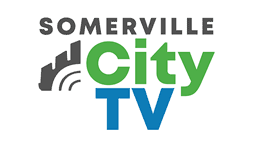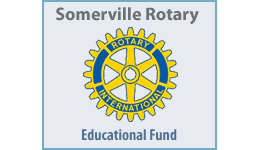
Somerville Public Schools are effectively integrating art into the general curriculum.
Integration the key to education
By Andrew Firestone
In the Somerville Public Schools, one often over-looked aspect of education is art. Through art, students can gain a conception of the common staples of any education like art, literature and history, through the understanding of concepts behind human expression. In this way, Somerville arts education is integrated into the curriculum at all grades, utilizing and blending of aesthetic and qualitative lessons to enhance the minds of the classroom.
“We don’t have a prescriptive program,” said SPS Visual Arts Department Head Luci Prawdzik. “Arts integration is kind of an initiative that we embrace. We do this because we want to give the students another way of learning things that are important to the curriculum.”
Prawdzik oversees the 13 faculty members of the SPS, and says she could not be prouder of the effort put out by the whole department. “Somerville supports the arts, embraces the arts and they fund the arts,” she said. “We are proud that we are able to offer a diverse and rich program in all ten of our schools. We have a dark room, we have an art computer lab.”
The methods of art teaching are designed to bring out understanding in students of deeper concepts behind art. In Charlotte Huffman’s first grade class at the East Somerville Community School, students are taught to use skills of engagement, perception and the elements of observing context by reading and examining the seminal classic Where the Wild Things Are by Maurice Sendak.
This continues on into the sixth grade, where concepts of geometry and the mathematical principle of circular symmetry are applied to the building of compasses in Julie McCarthy’s Winter Hill Community School.
 “The integration is not prescription,” said Prawdzik. “It’s not a directive. A math curriculum is very concrete, sequential. Art is more expressive and we don’t want to lose the creativity and, also, the aesthetic quality that students just have innately and bring with them. We want to be able to combine those two things together.”
“The integration is not prescription,” said Prawdzik. “It’s not a directive. A math curriculum is very concrete, sequential. Art is more expressive and we don’t want to lose the creativity and, also, the aesthetic quality that students just have innately and bring with them. We want to be able to combine those two things together.”
The sixth grade class at the Winter Hill school will get their chance to learn a little history up close, when, after learning the significance of hieroglyphics, and constructing ceramic Egyptian decorated cask called “cartouches” or jars that contained the organs of dead pharaohs, they will visit and tour the Museum of Fine Arts in Boston.
At the high school level, the choices are even more diverse. Dark room photography, studio art driven around the tessellation of M.C. Escher, and ceramics are available. There is even a course developed around contemporary art, and taught by May Chau, called “What’s ‘hip’ in the twenty-first century.” The course is designed around effective creative thought, but also taught to include the conceptions of nuance, ambiguity and historical significance of the postmodern era, while building ornate cardboard sculptures.
Prawdzik said that the department is also built around collaboration of the various teachers, “through designing lessons and units that we can share.”
“We offer professional development amongst all my teachers, K-12. We get together as groups. We share our units where, if something is really successful in one school, we’ll share it with someone else,” she said.















Reader Comments